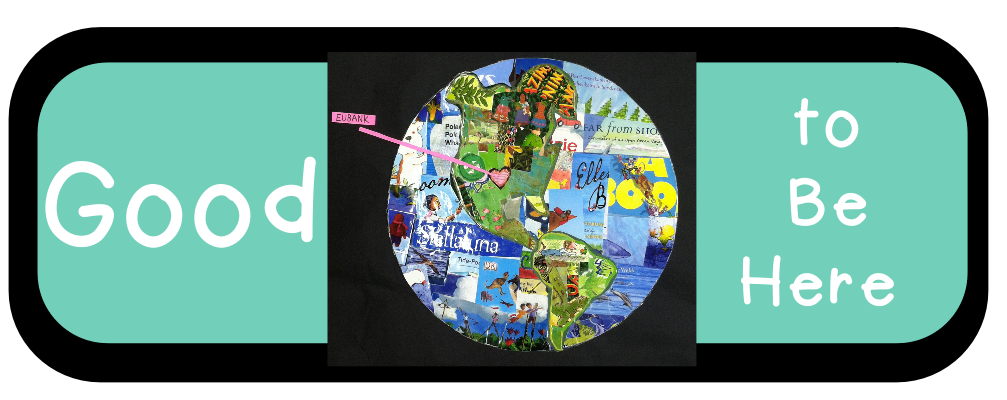"What do you see? Soak it all in."
I watched as the first graders sitting cross legged on the floor of the library leaned in closer to look at an image from McCloskey's 1949 Caldecott book, Blueberries For Sal, displayed on the Promethean board. One student cupped his hands around his eyes in a binocular fashion - to zoom mentally in on what he was seeing.
 |
| Blueberries For Sal, Robert McCloskey |
"The woman is surprised!" offered one little girl.
"What do you see that makes you say that?" I prompted.
"Her mouth is open and her eyes are like this." The student's jaw dropped and she turned to look at her classmates with eyes open wide. The expression jumped from face to face as others fell in suit to try the surprised look on for size.
I'm embarking on a new adventure this winter with my 1st and 2nd grades. This year we're attempting to take a closer look at Caldecott books and will try our hand at our first ever Mock Caldecott.
A Close Consideration
To help foster a close consideration of a book's illustrations I've been using Visual Thinking Strategies to guide students into thinking beyond a quick glance. My school is currently undergoing the process of redesign. As a part of this process we are evolving into a Fine Arts magnet school. Just this fall teachers were introduced to Visual Thinking Strategies as a way to increase student comprehension. Visual Thinking Strategies (VTS) uses three questions to guide discussion about a particular image:
"What's going on here?"
"What do you see that makes you say that?"
"What more can we find?"
"What do you see that makes you say that?"
"What more can we find?"
This seemed to me a perfect way to introduce Caldecott and all that it means when a book receives this honor. I wasn't disappointed! Since our first foray into VTS we have taken time to consider illustrations from Caldecott books such as:
 |
| Flotsam, David Wiesner, 2007 Caldecott |
 | |
| The Man Who Walked Between the Towers, Mordicai Gerstein, 2004 Caldecott |
It's been amazing to listen to students as they consider the illustrations and offer their insights - it's been even more amazing to then read the story together and see their nods, hear the exclamations of "I knew it!" and watch as the story settles comfortably over the group.
We'll be taking the things we've learned here and applying them to a small selection of books that just might receive a nod from the Caldecott committee this year. The beginning's been pretty great - I can't wait to see the end results.
